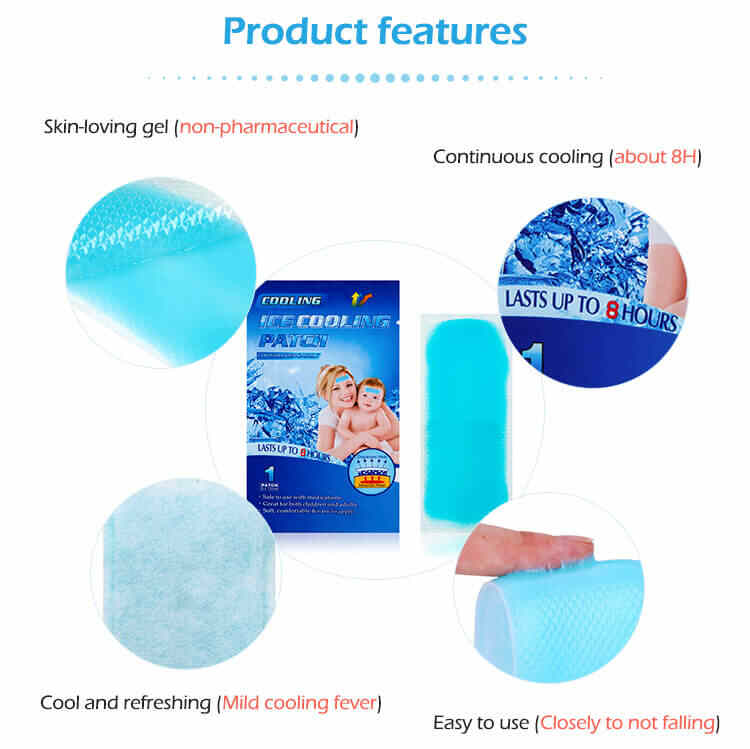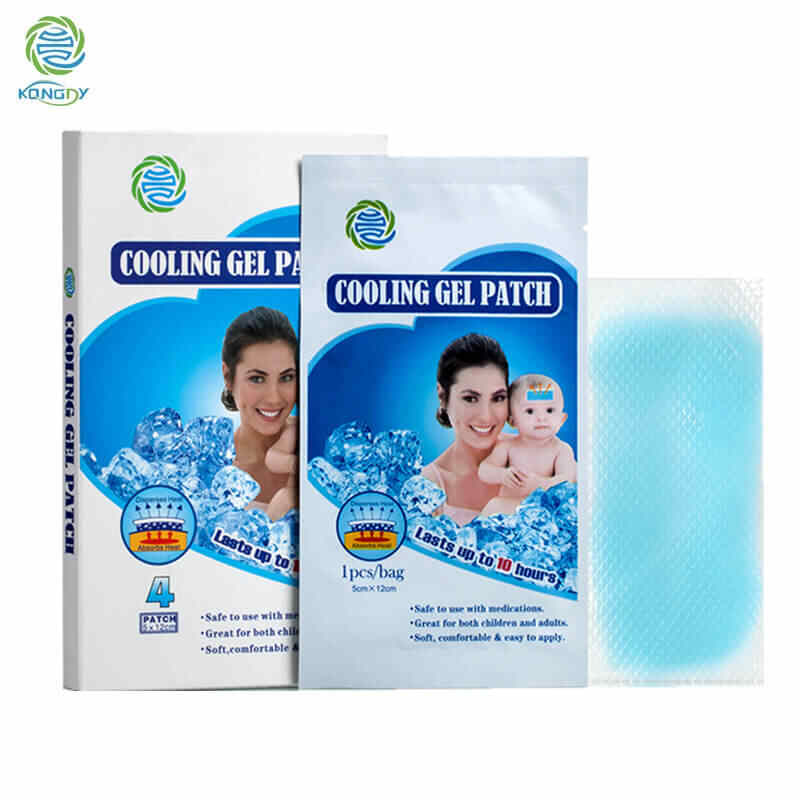How to Choose the Right Fever Cooling Patch OEM Partner for Your Brand
When it comes to expanding your product line or launching a new brand in the healthcare and wellness industry, choosing the right fever cooling patch OEM partner is critical. These patches are increasingly popular due to their non-invasive, drug-free approach to temperature control—especially for children, athletes, and patients managing post-surgical care. But with a crowded market, how do you identify the right fever cooling patch manufacturer or supplier to trust with your brand’s reputation?
In this comprehensive guide, we’ll explore the most important criteria to consider when selecting an OEM partner, what customization options are available, how private labeling works, and how the right partnership can elevate your brand in a competitive marketplace.

1. Understand the Role of a Fever Cooling Patch OEM
An OEM (Original Equipment Manufacturer) for fever cooling patches produces these patches based on your specifications or branding needs. Rather than manufacturing your own products from scratch, partnering with a fever cooling patch OEM allows you to leverage their existing infrastructure, R&D, and production capabilities.
This arrangement is ideal for businesses seeking:
Scalable production capacity
Customization options for patch formula and packaging
Regulatory-compliant manufacturing processes
Reduced time-to-market
2. Why Your Choice of OEM Partner Matters
Selecting the wrong OEM partner can lead to product inconsistency, regulatory risks, poor customer satisfaction, and ultimately, damage to your brand. On the other hand, a reputable fever cooling patch manufacturer helps ensure product quality, consistency, safety, and scalability—all key to long-term success.
Key benefits of choosing the right OEM partner include:
Product quality assurance through certifications (ISO, CE, FDA)
Compliance with local and international regulations
Access to R&D support for formula innovation
Faster lead times and cost efficiency
Customization for differentiation in the market
3. Essential Criteria for Selecting a Fever Cooling Patch OEM Partner
a. Certifications and Regulatory Compliance
A credible fever cooling patch supplier should hold certifications such as ISO 13485, CE, and FDA registration. These ensure that their manufacturing process follows international standards for medical devices. Always request documentation and verify their validity.
Questions to ask:
Are you certified under ISO 13485?
Are your products registered with the FDA or EU MDR?
Do you conduct third-party testing?
b. Customization Capabilities
Every brand is different. Look for a custom fever cooling patch provider that offers flexibility in:
Ingredients/formulation (e.g., hydrogel base, herbal extracts, menthol)
Sizes and shapes (e.g., baby-sized, forehead-sized, multi-use)
Adhesiveness and material (non-irritating, hypoallergenic)
Packaging (single pack, multi-pack, branded boxes)
Your OEM should help you develop a formulation that matches your brand’s target market, whether it’s children’s products, post-operative care, or sports recovery.
c. Private Labeling Services
A professional private label fever cooling patch manufacturer should provide full support for packaging and branding. This includes:
Custom logo and box design
Multilingual packaging
Custom inserts or instructions
Barcode and regulatory labeling
Having control over the branding experience is essential to building trust with your customers.
d. Production Capacity and Lead Time
Evaluate the OEM’s ability to meet your production volume and delivery deadlines. Look into:
Daily or monthly production capacity
Average lead times for new orders
MOQs (minimum order quantities)
Inventory management systems
An experienced fever cooling patch manufacturer should be transparent about their capacity and lead times, especially if you anticipate seasonal surges.
e. R&D and Innovation Support
If you're aiming to launch a custom fever cooling patch with unique benefits—such as faster cooling effects, herbal formulations, or special designs—you’ll need a supplier with R&D capabilities. Ask about:
In-house scientists or R&D team
Previous experience in custom development
Willingness to co-develop and test new products
This added layer of support can give your brand a significant competitive edge.
f. Communication and Customer Service
Timely, clear communication is non-negotiable. Look for partners who:
Respond promptly to inquiries
Offer bilingual support if needed
Provide regular updates on production
Assign a dedicated account manager
The ideal fever cooling patch supplier will treat your business as a partner, not just a client.
4. Red Flags to Avoid
When evaluating OEM candidates, be cautious of:
Vague or unverifiable certifications
Lack of product samples
Poor communication or inconsistent replies
No willingness to sign NDAs or supply agreements
Inflexibility on customization or packaging
If you’re serious about building a high-quality brand, cutting corners with a low-cost, low-transparency OEM can backfire in terms of safety, branding, and customer trust.
5. Benefits of Working with a Reliable Fever Cooling Patch Manufacturer
Partnering with a dependable fever cooling patch OEM brings long-term benefits:
| Benefit | Impact on Your Brand |
|---|---|
| Consistent product quality | Builds customer trust and loyalty |
| Speed to market | Outpaces competitors |
| Regulatory compliance | Prevents legal issues |
| Customization | Aligns product with market demand |
| Cost-efficiency | Supports profitability and growth |
6. How to Start the Selection Process
Here’s a simple step-by-step framework:
Define your product requirements (target audience, features, packaging)
Shortlist OEM candidates based on reputation, certifications, and product range
Request samples and verify quality
Evaluate communication and transparency
Compare quotations, MOQs, and lead times
Conduct a trial production run if possible
Sign a detailed agreement, including QC protocols, timelines, and confidentiality terms
Conclusion
Choosing the right fever cooling patch OEM partner can determine your brand’s success or failure in the market. From regulatory compliance and R&D capabilities to customization options and private labeling support, every detail matters. Take time to research and assess potential fever cooling patch manufacturers and suppliers carefully, ensuring their values, systems, and quality align with your business goals.
With the right partner, your custom fever cooling patch product can stand out in a crowded market, build customer trust, and drive long-term growth.
Related Questions and Short Answers
Q1: What certifications should a fever cooling patch OEM have?
A1: ISO 13485, CE, and FDA registrations are essential for regulatory compliance and quality assurance.
Q2: Can I customize the ingredients in fever cooling patches?
A2: Yes, a custom fever cooling patch OEM can offer formula modifications using hydrogel, herbal extracts, menthol, etc.
Q3: What is the typical MOQ for private label fever cooling patches?
A3: MOQs vary but typically range from 5,000 to 20,000 patches, depending on the manufacturer.
Q4: How long does it take to produce a custom order?
A4: Lead time is usually 3–6 weeks depending on customization level and order size.
Q5: How do I verify a fever cooling patch supplier’s credibility?
A5: Ask for certifications, client references, sample products, and verify their business licenses.






